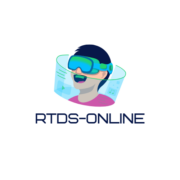Dive into the heart of storytelling where characters reign supreme. In a character-driven narrative, it’s the characters, their emotions, and their transformations that propel the story forward. But what exactly can a reader anticipate when opening the pages of such a tale?
Imagine getting to know a person in intimate detail, understanding their hopes, fears, and motivations. That’s what you’re signing up for with a character-driven story. You’re not just a bystander; you’re invited to embark on a journey of personal growth and discovery.
What Can a Reader Expect in a Character-Driven Story
Defining Character-Driven Narratives
 A character-driven narrative centers on the personal journey, transformations, and complex internal dynamics of the characters. These tales delve deep into the heart and psyche of the individuals, presenting the readers with a peek into their thoughts, aspirations, fears, and feelings. The development of the protagonist and supporting characters, through the exploration of their relationships, conflicts, and personal growth, acts as the driving force propelling the narrative forward. Examples include iconic books such as “To Kill a Mockingbird” by Harper Lee and “One Hundred Years of Solitude” by Gabriel Garcia Marquez.
A character-driven narrative centers on the personal journey, transformations, and complex internal dynamics of the characters. These tales delve deep into the heart and psyche of the individuals, presenting the readers with a peek into their thoughts, aspirations, fears, and feelings. The development of the protagonist and supporting characters, through the exploration of their relationships, conflicts, and personal growth, acts as the driving force propelling the narrative forward. Examples include iconic books such as “To Kill a Mockingbird” by Harper Lee and “One Hundred Years of Solitude” by Gabriel Garcia Marquez.
Key Differences from Plot-Driven Stories
Typically, character-driven narratives contrast with plot-driven stories. In a plot-driven story, the sequence of events, surprises, twists, and turns, holds the reins in steering the trajectory of the narrative. The storyline, rather than the characters and their transformations, captures the spotlight. Fast-paced thrill novels, like “The Da Vinci Code” by Dan Brown or “Gone Girl” by Gillian Flynn, serve as common examples of plot-driven narratives.
However, in character-driven storytelling, the characters govern the flow. The pacing might seem slower, the narrative more immersive, allowing the reader to perceive the world through the characters’ senses. The readers can expect scenarios that expose the characters’ deepest vulnerabilities or strengths, thereby facilitating a profound understanding of their psyche. The decisions, actions, and emotions of the characters dictate the course of the story, making every character integral to the narrative progression.
Elements of Character-Driven Stories
Deep Character Development
 Character development forms the core of a character-driven story, posing as the primary vehicle driving the narrative. Herein, each character begins with an established personality, and their characteristics—both flaws and assets—are gradually revealed throughout the story. For instance, a timid character gradually emboldening or a cynical individual learning to trust again. The transformations are intricate, hence making the characters appear dynamic, real, and profoundly relatable. It thus enables readers to deeply understand and connect with the characters, successfully distilling the quintessential essence of character-driven stories.
Character development forms the core of a character-driven story, posing as the primary vehicle driving the narrative. Herein, each character begins with an established personality, and their characteristics—both flaws and assets—are gradually revealed throughout the story. For instance, a timid character gradually emboldening or a cynical individual learning to trust again. The transformations are intricate, hence making the characters appear dynamic, real, and profoundly relatable. It thus enables readers to deeply understand and connect with the characters, successfully distilling the quintessential essence of character-driven stories.
Intense Internal Conflicts
Another crucial facet of character-driven narratives encompasses intense internal conflicts. In these narratives, characters wrestle with external circumstances. However, the spotlight often shines on their internal struggles—their internal dilemmas, battles, and moral quandaries. They might grapple with issues like identity confusion, moral ambiguity, or emotional turmoil. For example, a character torn between loyalty to family and personal integrity or faced with the choice of self-preservation versus philanthropy. These intense internal conflicts give depth and complexity to the characters, encouraging readers to empathize and evolve alongside them.
Impacts on Reader Engagement
Emotional Connection with Characters
 In character-driven stories, readers become emotionally invested in the characters. As they delve deeper into the narrative, they experience the characters’ joys, fears, and frustrations. This emotional connection amplifies as the reader witnesses the characters overcoming challenges, wrestling with dilemmas, and undergoing transformations. For instance, when reading Harper Lee’s “To Kill a Mockingbird,” one might feel a resonating connection with the protagonist, Scout, and her journey of understanding morality in a flawed world. As the characters become relatable, it enhances reader engagement, inviting the reader to fully immerse themselves in the world depicted in the story.
In character-driven stories, readers become emotionally invested in the characters. As they delve deeper into the narrative, they experience the characters’ joys, fears, and frustrations. This emotional connection amplifies as the reader witnesses the characters overcoming challenges, wrestling with dilemmas, and undergoing transformations. For instance, when reading Harper Lee’s “To Kill a Mockingbird,” one might feel a resonating connection with the protagonist, Scout, and her journey of understanding morality in a flawed world. As the characters become relatable, it enhances reader engagement, inviting the reader to fully immerse themselves in the world depicted in the story.
Influence on Reader’s Perspective
Moreover, character-driven stories have a significant influence on readers’ perspectives. These narratives often invite readers to reassess their beliefs and question existing bias. They provide an opportunity to empathize with characters from diverse backgrounds and realities, fostering an understanding beyond personal experience. For instance, in Khaled Hosseini’s “The Kite Runner,” readers witness the guilt and redemption journey of the protagonist, Amir, altering perspectives on forgiveness and friendship.

